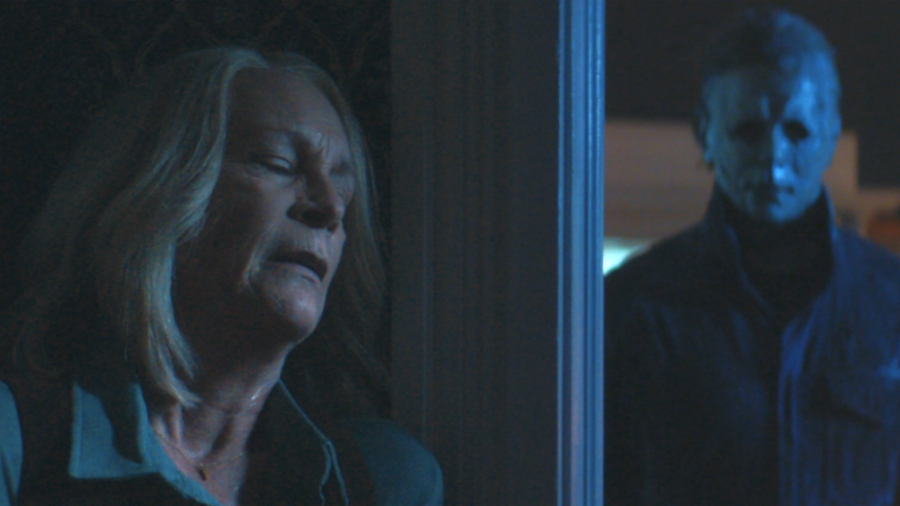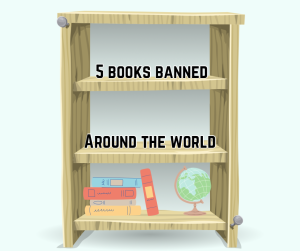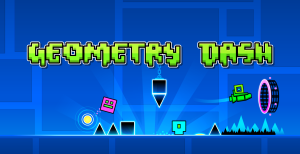“Halloween Ends” concludes the famous horror series in the wildest way possible
Photo courtesy of BlumHouse Productions
Laurie Strode (Jamie Lee Curtis) faces off against Michael Myers for the last time after a four decade struggle with the killer.
October 19, 2022
Warning: This review contains spoilers for “Halloween” (2018), “Halloween Kills,” “Halloween Ends” and “Christine”.
After 40 years of inconsistent sequels that never captured the same magic of the original “Halloween,” director David Gordon Green set out to make a definitive sequel that could wipe the slate clean. When “Halloween” (2018) was a massive success, two back-to-back sequels were greenlit, making this continuation a trilogy. It’s been four years now, and “Halloween Ends” promises an ending to a saga that’s been over four decades in the making.
Four years after Michael Myers (James Jude Courtney) returned home and killed countless lives on Halloween night in 2018, the town of Haddonfield, Illinois, is still wounded. Michael has vanished, but tragedies still persist. Corey Cunningham (Rohan Campbell) is haunted by the accidental death of a child he was babysitting, and the incident has left him guilty in the eyes of the town. Laurie Strode (Jamie Lee Curtis) has decided to stop living with the evil that has haunted her for 40 years, but Michael isn’t dead yet.
The trilogy has been a bumpy ride. “Halloween” (2018) was a retread of the original film with more characters than felt necessary. “Halloween Kills” was a hateful sequel with a terrible script that could not make up its mind on what message it wanted to communicate. “Halloween Ends,” on the other hand, goes in a completely different direction.
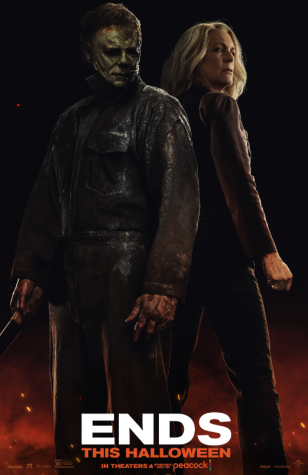
This film switches focus to Corey as he is continually harassed by the community for the accident that took place three years previously. He falls in love with Laurie’s granddaughter, Allyson Nelson (Andi Matichak), but encounters Michael Myers after getting beat up by teenagers. Meeting the infamous killer inspires Corey to embrace his newfound dark side, and he begins a murder spree of his own.
For the final installment to have a secondary killer that takes up most of the plot is a weird choice. It develops the theme of Haddonfield becoming plagued by this evil that won’t die, but it barely delivers a satisfying ending to the Michael and Laurie plot.
Some of the scenes feel jarring and disconnected from the rest, especially more of the romance scenes. Even with these inconsistencies and questionable choices, the film delivers a slasher that feels much more in line with campy horror flicks from the 1980s.
This subversive shift of audience perception can be compared to “Halloween III: Season of the Witch,” which was set in a completely different universe. The sudden change in “Halloween III: Season of the Witch” left audiences baffled, but it has become a cult classic among “Halloween” fans in the years since.
“Halloween Ends” makes a big shift as well that becomes more character focused and less of what viewers might expect going in. Both films even use the same font choice for their credits, which drives home the parallel of having awesome new ideas that go beyond the standard “Halloween” formula.
The concept of Corey’s transformation into Michael’s surrogate takes a lot of inspiration from the work of Stephen King. In particular, this film shares more comparisons to another of filmmaker John Carpenter classics besides “Halloween” (1978), and that film is “Christine,” a film adaptation of King’s novel.
In “Christine,” a teenager slowly becomes more demented and evil from the influence of a haunted car he bought. The story is strikingly similar in its tone and plot points to “Halloween Ends,” and it makes for an interesting choice that sets this movie apart from the rest of the series.
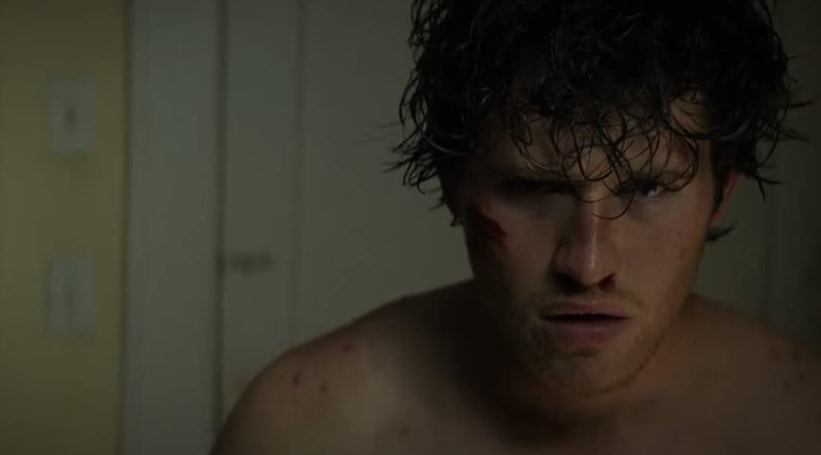
While these fresh ideas are cool to see in a pre-established slasher series, its inclusion in the entry, in particular, is odd. The whole trilogy has a weird structure in general, and it feels like the trilogy should have been released in reverse order.
It would make more sense if this plot with Corey was the first film, to establish where the town and Laurie are 40 years later. Then, the second film could be a combination of “Halloween” (2018) and “Halloween Kills.” The theoretical film could show the town fighting back against a recently escaped Michael and ends with a more damaged Laurie that we have already seen in “Halloween” (2018).
Overall, this new set of films is more fascinating than good. They bring a great atmosphere that harkens back to the very first “Halloween,” but messy writing and character work hold it back from reaching those same heights. While the previous two films have been lacking in more ways than one, “Halloween Ends” manages to create a fun experience that tries something new.
This film still has many faults, and it is a rather weak conclusion to this series, but it’s big swings pay off more often than not. It doesn’t quite hit the same genius level that was there for the original 1978 “Halloween.” But for a fun horror movie that takes some unexpected turns, “Halloween Ends” is a delight. I was ready to hate this film, but it surprised me with a great time at the movies. For that, I cannot rate “Halloween Ends” any lower than a six out of 10.
In this year of the horror film renaissance, it’s nice to still get surprised by even the most famous of all slasher franchises.

